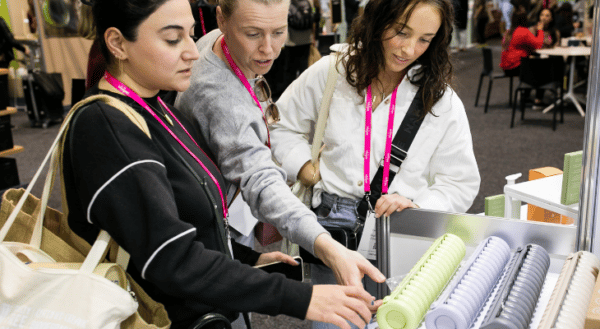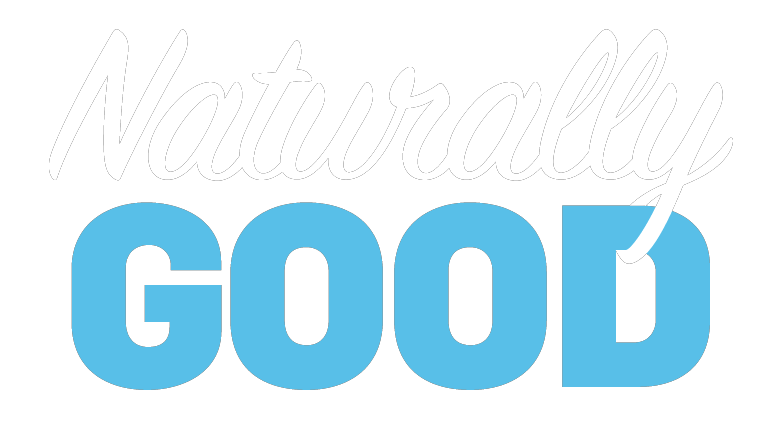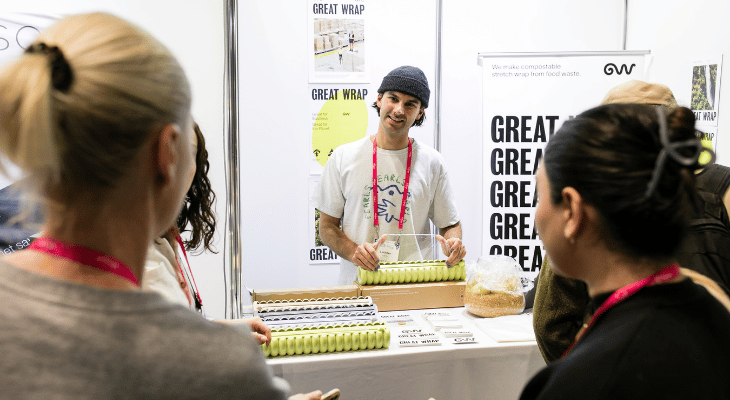Most Australians think of cling wrap as something that belongs in the kitchen drawer, but retailers – particularly those in the FMCG segment – more commonly encounter it when they receive a delivery swathed in “pallet wrap”.
For life partners Jordy and Julia Kay, the practice of wrapping pallets in single-use plastic was a problem that needed to be solved – so, they put aside promising careers to find a solution.

How to an architect and a winemaker end up revolutionising the packaging industry?
As an architect, I was spending my days designing things that are supposed to last for centuries. Then I started thinking, ‘What’s the point if the world around us becomes uninhabitable?’ And Jordy was making wine and using a lot of pallet wrap to ship wine around the world. We were driven to action.
And then you realised it was a great business idea, too?
Precisely. Every business has to ship things. We began by thinking about reinventing pallet design so pallet wrap was no longer necessary. But we soon realised that succeeding would require a huge mindset shift among the businesses that use pallets. Focusing on the wrap made more sense.
Have Australian businesses been receptive in the three years since you launched?
Oh, incredibly so. They’re so on board. So many businesses have said to us: ‘This is the only piece of plastic in our supply chain that we can’t come up with a solution for’ and have really wanted us to step in. Now we can’t make the wrap quick enough.
The innovation here is using food waste to create a plastic-like product that is completely biodegradable. That’s obviously fantastic, but does the production itself generate emissions, for example?
One way that we’re planning to bring down our overall carbon footprint is to set up manufacturing facilities in each continent, so the wrap isn’t travelling as far. That’s one reason we’re not necessarily thinking about expanding or diversifying the business right now: there is so much to do to hone the model for Great Wrap. And the sheer scale of the problem that pallet wrapping creates is not going to be solved immediately.
Does that mean there are still hold-out businesses who need further convincing to ditch traditional pallet wrap?
Well, we are currently about 10% more expensive than the alternative, although we’re working to bring that down. Price parity is an important goal for us.
You produce Great Wrap for consumers, too, and launched the product just before the pandemic hit. Did that help or hinder what you were trying to achieve?
It’s hard to comment, because I wasn’t in a comparable business before we launched Great Wrap three years ago. But, if anything, recent events and working from home seem to have created a better overall understanding of our individual waste footprints. And pallets continued to be wrapped during the pandemic.
Do you think recent events, including the bushfires and floods, will make it easier for sustainability entrepreneurs like you and Jordy to succeed?
I believe so, because now consumers and businesses realise that we have to proactively choose the sustainable option in order to save the world we live in. People are really saying: ‘Oh my god, we’re actually accountable for the world we live in.’
With conscious packaging now more important than before, could this be the solution that your business needs? Find out more about Great Wrap and get it in touch with the team at the Naturally Good 2022 exhibitor directory.

